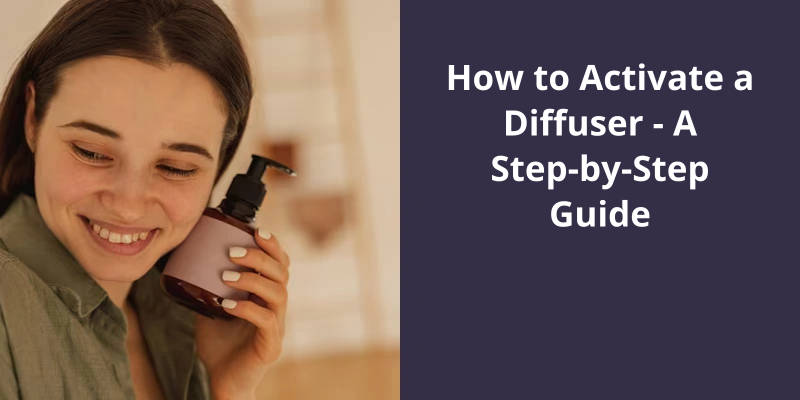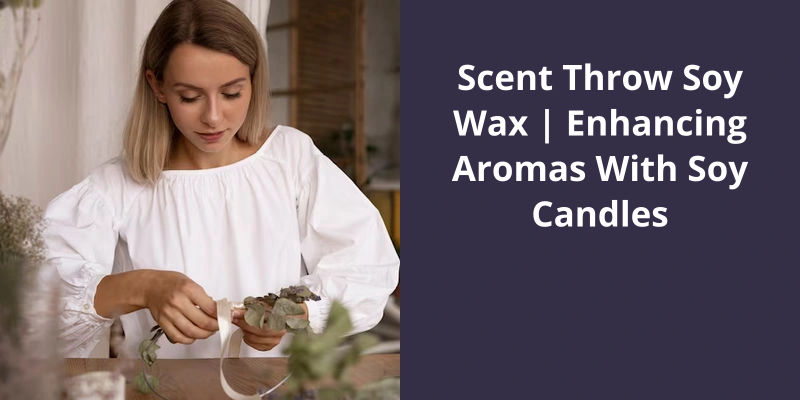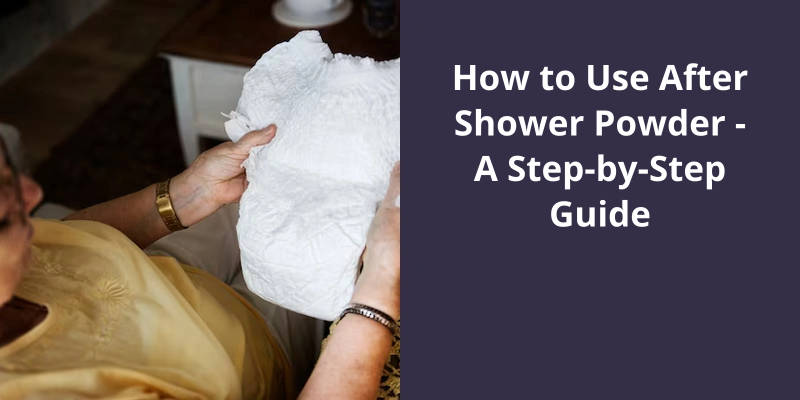Bringing a pleasant scent to your living space can create a welcoming and relaxing atmosphere. One way to achieve this is by using a diffuser. It's not as complicated as it might seem. To start, you simply need to place 4-8 reeds into the open bottle of your chosen diffuser. These reeds will serve as the medium through which the fragrance is dispersed. After about 10 minutes, it's a good idea to flip the reeds so that the saturated ends are exposed to the air, ensuring a continuous release of the scent. Once you're satisfied with the arrangement of the reeds, you can discreetly set the activated diffuser on a shelf or make it a focal point of your room, adding both style and fragrance to your space.

How Do Reed Diffuser Sticks Work?
Reed diffuser sticks are a popular and convenient way to fill your home with wonderful scents. But have you ever wondered how they work? The secret lies in the design of the reeds themselves. These diffuser reeds are filled with microscopic channels or capillaries that can absorb liquid.
When you pour fragrance oil into the diffuser bottle and insert the reeds, a process begins. The fragrance oil starts to slowly travel up the length of the reeds, using those tiny channels like a network of straws.
Once the fragrance oil reaches the top, it gets released into the air. The scent lingers in the surrounding space, creating a pleasant and inviting atmosphere.
It’s important to note that the rate at which the fragrance is released can vary depending on factors such as the size of the reeds, the thickness of the fragrance oil, and the ambient temperature. So, if you want a stronger scent, you can use thicker reeds or increase the number of reeds in the bottle.
To keep the scent fresh and vibrant, you can also occasionally flip the reeds. This helps to refresh the fragrance by exposing the saturated ends of the reeds to the air. By doing so, you can ensure that your diffuser continues to fill the room with your favorite scent for weeks or even months.
How to Properly Maintain a Reed Diffuser, Including Cleaning the Bottle and Reeds.
- Regularly clean the reed diffuser bottle with warm, soapy water.
- Use a non-abrasive brush or cloth to remove any residue or build-up.
- Rinse the bottle thoroughly to ensure no soap remains.
- Dry the bottle completely before refilling it with your desired fragrance oil.
- In addition to cleaning the bottle, it’s important to clean the reeds.
- Every 1-2 months, remove the reeds from the bottle and gently wipe them with a paper towel or cloth.
- If the reeds become clogged or saturated, consider replacing them with new ones.
- To maximize the lifespan of your reed diffuser, keep it away from direct sunlight and heat sources.
- Rotate the reeds every few days to refresh the scent distribution.
- Remember to regularly check the oil level and refill as needed.
It isn’t uncommon to encounter issues with diffusers, particularly when it comes to the lack of diffusion despite the lights being turned on. In such cases, the first step you should take is to clean your unit. Afterward, unplug the diffuser, refill it with filtered water, tap water, or spring water if needed, and then reconnect and turn the diffuser back on. It’s important to note that using distilled water can adversely affect the diffusion process, so be sure to avoid it.
Why Is My Diffuser Not Diffusing?
If you find that your diffuser isn’t diffusing properly, even though the lights turn on, there are a few troubleshooting steps you can follow to resolve the issue. Firstly, it’s important to clean your unit regularly to ensure optimum performance. Over time, essential oils can build up and clog the diffuser, hindering diffusion. To clean your diffuser, unplug it and empty any remaining water and oils. Use a soft cloth or cotton swab to wipe the inside of the diffuser and remove any residue.
Next, check the water level in your diffuser. If it’s running low or empty, refill it according to the manufacturers instructions. Ensure that you’re using only filtered water, tap water, or spring water. Distilled water isn’t recommended as it can affect the diffusion process. Once the water is refilled, reconnect the diffuser and turn it on again. It’s essential to follow the specific activation steps outlined in the user manual of your diffuser.
Low-quality oils or oils that have been adulterated may not produce the desired scent or have a weaker diffusion. Try using a different brand or type of essential oil and see if the diffusion improves.
Some diffusers have multiple mist modes, such as continuous or intermittent diffusion. Ensure that you’ve selected the appropriate setting for your needs. If the diffuser still doesn’t diffuse after trying these steps, it may be a technical malfunction. In this case, refer to the manufacturers warranty and contact their customer support for further assistance. They may be able to provide additional troubleshooting tips or arrange a repair or replacement if necessary.
Remember to clean your unit regularly, use the correct water type, ensure the essential oil is of good quality, and adjust the mist settings if needed.
Starting an oil diffuser is a simple and soothing process. To begin, carefully add water to the fill line, typically around 1 cup, making sure to follow the specific instructions provided by your diffuser. Next, add 5-10 drops of your chosen essential oil into the water, allowing the aromatic essence to infuse. Once the lid is securely placed back on top, turn on your diffuser and let the calming fragrance envelop your space, creating a serene and relaxing atmosphere.
How Do You Start an Oil Diffuser?
If you’re looking to create a calming and fragrant atmosphere in your home, using an oil diffuser can be a great option. But how do you start one? The process may vary slightly depending on the type of diffuser you have, but the general steps are the same.
First, you’ll want to add water to the fill line of your diffuser. This line is usually marked on the inside of the reservoir and is typically around 1 cup of water. However, it’s important to follow the specific instructions for your diffuser to ensure you add the correct amount.
Once you’ve added the water, it’s time to add your essential oil. Most diffusers recommend adding around 5-10 drops of oil, but again, it’s important to consult the instructions for your specific diffuser. You can use a single oil or create a blend of your favorite scents.
After you’ve added the essential oil, place the lid back on top of the diffuser. Make sure it’s securely in place to prevent any leakage. Some diffusers may also have additional settings or features, such as a timer or color-changing lights. Adjust these settings as desired before turning on the diffuser.
Finally, it’s time to turn on your diffuser and enjoy the beautiful scents that fill the room. Depending on your diffuser, you may have to press a button or switch to activate it. Once it’s on, you should start to see a visible mist being released.
Remember to always follow the manufacturers instructions for your specific diffuser, as different models may have different features and requirements. With the proper setup, you can create a soothing and aromatic atmosphere in your home with just a few simple steps.
After using your essential oil diffuser for a while, you may notice a build-up of residue and a decrease in it’s performance. Fortunately, there are simple steps you can take to revive your diffuser and get it back in optimal condition. The key is a thorough cleansing process that involves filling the water container with a mixture of water and white vinegar, allowing the diffuser to run for a few minutes, and then giving it a good rinse. Let’s dive into the details of how to effectively revive your diffuser and enjoy the benefits of aromatherapy once again.
How Do You Revive a Diffuser?
To revive a diffuser, the first step is to thoroughly cleanse it. Start by filling the water container halfway up, ensuring that the water level remains below the maximum line. Next, add a tablespoon of white vinegar to the water. This vinegar will aid in the dissipation of any residual oils that may be stuck within the diffuser.
Once the vinegar has been added, turn the diffuser on and let it run for approximately 5 to 10 minutes. This will allow the vinegar and water mixture to circulate and thoroughly clean the diffusers interior. After the designated period, turn the diffuser off and carefully empty the water and vinegar solution from the water container. Make sure to rinse the container thoroughly to remove any remaining vinegar residue.
After cleansing the diffuser, it’s important to dry it thoroughly before proceeding with the next step. Use a clean cloth or towel to wipe away any excess moisture and allow the diffuser to air dry for a few hours. Once the diffuser is completely dry, it’s ready to be refilled and used again.
When refilling the diffuser, be mindful of the water level and avoid exceeding the maximum line. Add your desired essential oil or fragrance to the water container, ensuring that you follow the recommended dosage and dilution guidelines for the particular oil you’re using.
Finally, turn the diffuser on and enjoy the revitalizing aroma that fills the air. Remember to regularly clean and maintain your diffuser to ensure optimal performance and longevity. With proper care, your diffuser will continue to enhance your living space with it’s calming and refreshing scents.
Tips for Choosing the Right Essential Oils for Your Diffuser
When it comes to choosing the right essential oils for your diffuser, there are a few tips to keep in mind. Firstly, consider the purpose you’ve in mind for using the diffuser. Different essential oils have different effects, such as promoting relaxation, improving focus, or uplifting the mood.
Next, make sure to choose high-quality essential oils. Look for oils that are 100% pure and have been properly tested and labeled. This ensures that you’re getting the full benefits of the oil without any harmful additives or chemicals.
It’s also important to consider personal preferences and sensitivities. Some people may find certain scents too strong or overpowering, so it’s a good idea to start with milder oils and gradually experiment with different scents.
Lastly, be mindful of any allergies or respiratory conditions that you or your household members may have. Some essential oils can trigger allergic reactions or worsen respiratory symptoms, so it’s important to research and choose oils that are safe for everyone.
Source: How To Clean A Diffuser Correctly – REVIVE Essential Oils
One popular method for lighting an oil diffuser is by placing a candle underneath the reservoir and lighting it. However, it’s important to keep a watchful eye on both the candle and the diffuser to ensure that the candle remains lit and doesn’t extinguish on it’s own.
How Do You Light an Oil Diffuser?
If youre wondering how to activate a diffuser, specifically an oil diffuser, there are a few simple steps you can follow. The first step is to ensure your diffuser is clean and free from any residue or old oil. This will ensure that the aroma of the new oil isn’t compromised by any lingering scents. Once your diffuser is clean, it’s time to add the essential oil of your choice to the reservoir. Most diffusers have a specific fill line, so be sure not to exceed this mark.
To do this, youll need a candle. Place the candle under the reservoir of the diffuser and proceed to light it. It’s important to keep an eye on both the candle and the diffuser as they work together. You want to make sure that the candle doesn’t go out on it’s own, as this will prevent the oil from being diffused properly. If the candle does go out, simply relight it and continue monitoring it throughout the process.
As the candle burns, the heat will cause the oil to evaporate and release it’s aromatic scent into the air. This will create a pleasant and inviting atmosphere in your space. It’s important to note that diffusers should never be left unattended while in use.
Once youre satisfied with the aroma in the room, or if youre done with using the diffuser, it’s time to extinguish the candle. Use a snuffer or carefully blow out the flame, ensuring that it’s completely out before leaving the area.
Different Types of Oil Diffusers and How They Work
There are several types of oil diffusers available in the market, each working in it’s own unique way to disperse the aroma of essential oils into the air. The most common types include ultrasonic diffusers, nebulizing diffusers, heat diffusers, and evaporative diffusers.
Ultrasonic diffusers use vibrations to break down essential oils into microparticles, which are then released as a fine mist into the air. Nebulizing diffusers, on the other hand, use an atomizer to disperse undiluted essential oils directly into the air, without the need for water or heat.
Heat diffusers, such as candle diffusers or electric heat diffusers, use heat to gently warm the essential oils, causing them to evaporate and release their fragrance. Evaporative diffusers, like clay diffusers or reed diffusers, work by allowing the essential oils to evaporate naturally into the surrounding air.
When activating a diffuser, the process may vary depending on the type of diffuser you have. Generally, you’ll need to add water and a few drops of your chosen essential oil to the diffuser’s reservoir. Then, following the manufacturer’s instructions, turn on the diffuser and select your desired settings. The diffuser will then begin dispersing the aromatic mist or evaporating the oil, filling the room with a pleasant fragrance.
Conclusion
In conclusion, activating a diffuser is a simple and enjoyable process that allows you to effortlessly fill your space with a delightful scent. By placing a few reeds into the open bottle, the fragrance begins to disperse gradually, creating a welcoming atmosphere.





